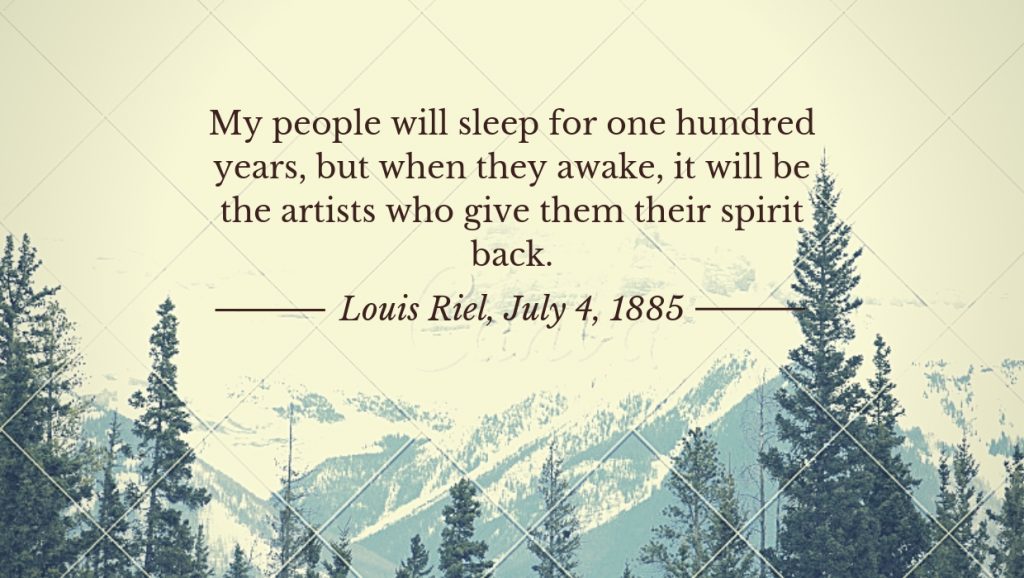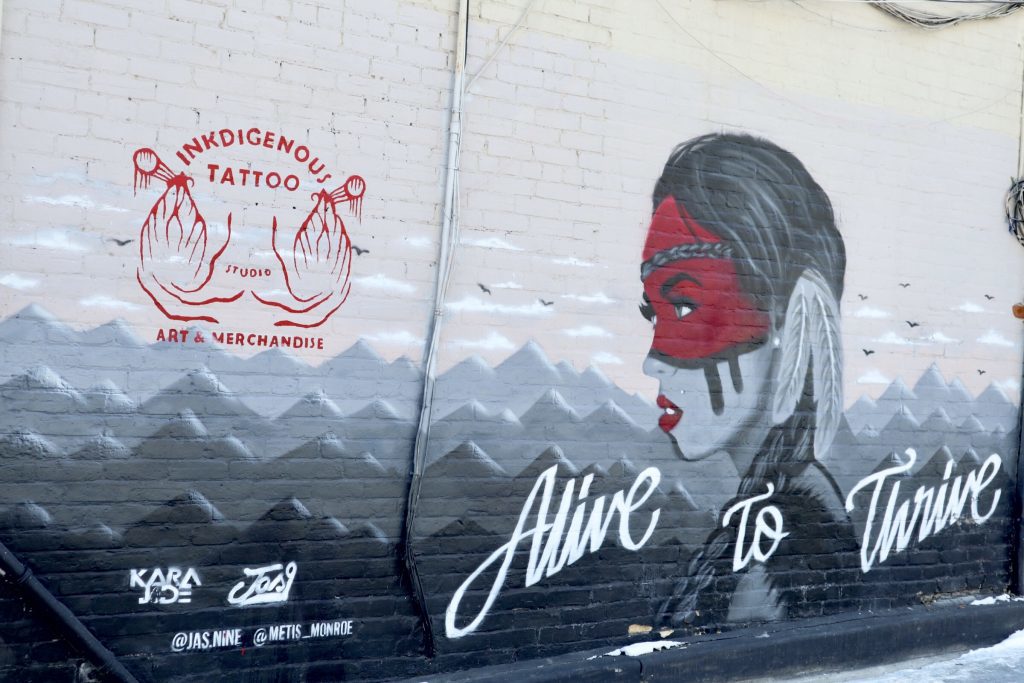By Mariah Siddiqui
The little tattoo shop with the witty name, “Inkdigenous Tattoo” sits on its own downtown corner.
Rock music blasts around the room from the speaker at the front desk as the main artist, Toby Sicks, taps his foot and bumps his head to the beat. He slides onto his chair and rolls over to his client. As he peers over her, he studies the artwork on her skin while planning his next move. His constant jokes make everyone in the room feel comfortable and the client looks happy with the distraction from the pain of the tattoo process.
He grips his tattoo machine in one hand while holding a wipe in his other. His blonde hair stands straight up and there are glasses perched on his nose in front of his wide eyes, magnifying what he sees. He swipes at her skin, shading in the wings of a woman, then glides his wipe along the broken skin as she winces at the pain.
The shop is more than just a little tattoo shop, it holds something of significance. The buzzing of the tattoo machines bounces off the walls as clients permanently reclaim their Indigenous roots through artwork, hoping that those who see the ink on their skin ask of its importance. Through a simple question, many will be educated on a culture that runs deep through the land they walk upon every day.
For many, a tattoo is a way to permanently reclaim their Indigenous culture and can be a physical reminder of all that they endured at the hands of the Canadian government, which is what Sicks ultimately wants for his clients. Celebrating beautiful aspects of the culture that Ottawa attempted to strip away from them is a step towards inner healing and outer change.
Toby Sicks, the founder and owner of this tattoo shop, has a welcoming smile on his face as he sits on his chair and eccentrically waves his tattoo machine through the air while speaking.
“Welcome to Inkdigenous Tattoo. Take off your shoes, grab a pair of slippers, and take anything you want from the fridge. No charge,” says Sicks. A row of comfy slippers are lined up on a mat in front of the main entrance, ready to be worn.
All photos taken by Mariah Siddiqui at Inkdigenous Tattoo Studio on March 8, 2019.
Paintings by Indigenous artists are hung up on the walls and a thick red stripe runs along the walls of the room. On this particular day, a woman was getting a tattoo of an Indigenous woman with her wings spread out wide in order to cover up a surgery scar from a few months ago, as shown below.
Inkdigenous Tattoo, located in Moss Park, is a place where activism and art go hand in hand with each other. Sicks hopes to educate those about the Indigenous community while creating a safe space for those to share their stories and advocate for equality.
Sicks is a Métis activist alongside being a tattoo artist. He went to George Brown College where he studied community work and was exposed to the topic of anti-oppression then began to learn more about his culture and traditions.
“Systemic oppression has been in the community, taking away our language, culture, and traditions. I’ve been tattooing since I was 15 years old so it was like, boom,” Sicks explained. “There’s a lot of our community that’s missing the arts.”
Louis Riel was a Métis leader, a founder of Manitoba, and a key figure in the Red River and North-West resistances. He was executed for treason in 1885.

Black T-shirts with the store logo in red and merchandise by Indigenous-owned companies can be found on display beside the door. Sicks only wanted to showcase Indigenous art and merchandise.
“Everything is handmade or made from an idea that is Indigenous,” says Sicks.
When coming up with the clever name, “Inkdigenous Tattoo”, Sicks had other options in mind. While discussing names with an elder, “Michif Ink” was an option. Michif is the language of the Métis people of Canada and the United States. Then, a friend mentioned the current name which Sicks thought was a great idea, and that was that.
The shop opened in 2017 in Moss Park. He chose this location because of affordability but it worked out well because there are many centres for Indigenous people in the area. Metis Nation, Miziwe Biik Aboriginal Employment and Training, Toronto Council Fire Native Cultural Centre, and the Indigenous District building which is currently being built, all share a home in Moss Park.
A mural is painted on the wall outside the shop, painted by Jas9. A landscape of towering grey mountains, in front of them stands a woman who has two feathers in her long, braided hair. Half of her face is painted blood red and her stance screams ‘power’. The words “Alive to Thrive” cascade over the visual.

Sicks wants to educate people on Indigenous culture so that people can learn more about something they may not understand and this can be done through art. Many people will see these tattoos with stories behind them that they can hear and take away from. Something as minuscule as a tattoo can have a big cultural impact.
“You are either with the oppressed and helping us or you are against us. Either way I am just working for equality and for a better community,” says Sicks.
His aim is to preserve culture and tradition for what it really is and take away some of the stigma and worries that people have.
Here are some of Sicks’ pieces shared on his Instagram.
Sicks shared a story about an elderly woman who came in for a tattoo, and left with much more than just ink on her skin.
He recalls this woman travelling to his shop from up north. She was looking to get a memorial piece to honour her mother and grandmother, as they were in the residential school system.
He drew up a sketch and by the time he finished tattooing her, she immediately started crying. The piece touched her so much and it just goes to show you how powerful of a healing process a tattoo can be.
“When it comes to cultural identity, being able to give that back to somebody that they can’t take away, it proves who they are in society or helps them see something and be proud of it without anybody being able to knock it down, judge it, criticize it or racialize it- it’s for them,” says Sicks.
“It’s all in the art and it is a beautiful thing,” he says, “there’s a lot of healing in the tattoo process.”
